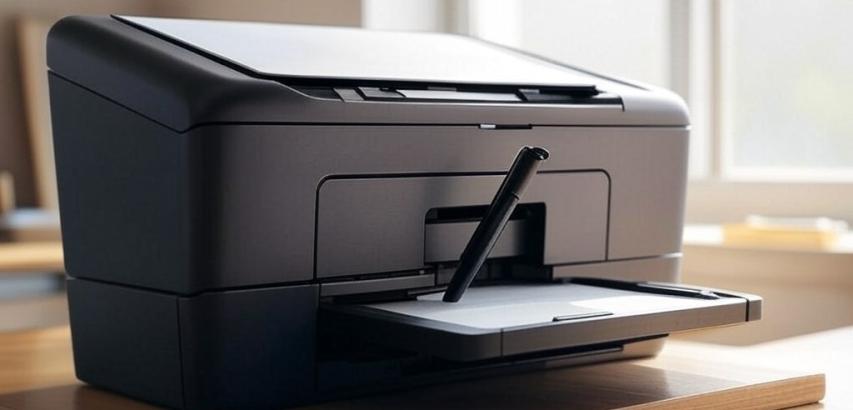
Printers designed to use external pens (commonly referred to as pen plotters) are specialized devices that perform precision drawing or writing by using physical pens to create graphics, text, or designs. These printers differ from traditional inkjet or laser printers, as they physically move pens over a surface, offering unique capabilities for artistic and technical applications.
Overview of Printers Using External Pens
Pen-based printers, or plotters, are typically used for tasks requiring high precision and customization, such as:
Architectural or engineering blueprints.
Artistic designs, sketches, and calligraphy.
Fabric or garment patterns.
Custom labeling and signage.
The external pen is either manually attached or automatically inserted into the printer’s pen holder. The device moves the pen in a coordinated manner to draw directly on the medium.
Types of Printers Using External Pens
Pen Plotters
Description: Use pens to draw on paper or other flat surfaces.
Mechanism: A pen moves along X and Y axes to replicate digital designs.
Applications: Ideal for CAD (Computer-Aided Design) work, engineering diagrams, and artistic prints.
Examples: Roland DXY series, HP DraftPro plotters.
Robotic Arm Printers
Description: Employ robotic arms to hold and maneuver pens for drawing or writing.
Mechanism: The arm can create complex designs on various materials, including 3D objects.
Applications: Used in crafting, personalized gift making, and experimental art.
DIY Pen Plotters
Description: Custom-built devices often made using Arduino boards and stepper motors.
Mechanism: Hobbyists design these to explore creative or technical drawing projects.
Applications: Affordable option for small-scale artistic and educational purposes.
Key Features and Advantages
Precision and Detail
Pen-based printers excel at creating intricate designs with exact lines and curves.
Fine-tipped pens allow for detailed work that inkjets or lasers may struggle to achieve.
Material Versatility
Can draw on unconventional materials like fabric, leather, plastic, or wood (depending on pen compatibility).
Customizability
Users can swap pens for different colors, line widths, or special inks like metallic or glitter.
Ideal for custom artwork, branding, or calligraphy projects.
Sustainability
Unlike traditional printers, which rely on ink cartridges or toner, these devices use refillable pens, reducing waste.
How to Use an External Pen with a Printer
Set Up the Printer:
Install the printer drivers and software on your computer.
Load the medium (e.g., paper, fabric) onto the printer's bed.
Install the Pen:
Secure the pen into the designated holder. Ensure it is properly aligned.
Adjust the pen pressure to prevent smudging or damaging the surface.
Design the Output:
Use compatible software (like Adobe Illustrator, AutoCAD, or Inkscape) to create or upload the design.
Convert the design into a format the printer can read (e.g., SVG, HPGL).
Run the Printer:
Send the design to the printer and monitor the process.
Replace pens as needed during the operation for multi-color designs.
Post-Printing:
Allow the ink to dry completely before handling the medium.
Clean the pen holder if ink or debris accumulates.
Applications of External Pen Printers
Art and Craft Projects
Creating custom sketches, patterns, or illustrations.
Producing handmade cards, posters, or decorative pieces.
Calligraphy and Writing
Writing elegant scripts for invitations or certificates.
Perfect for creating consistent handwriting effects.
Fabric and Textile Design
Drawing patterns on fabrics for embroidery or garment creation.
Adding decorative designs to leather or canvas.
Engineering and Architecture
Producing technical blueprints and diagrams.
Used in CAD workflows for precise drafting.
Limitations
Speed:
Pen-based printers are generally slower than traditional printers due to the physical movement of the pen.
Maintenance:
Pens may dry out or require frequent replacement.
The alignment of the pen must be monitored to avoid inaccuracies.
Limited Colors and Inks:
Restricted to the type of pens and inks compatible with the printer.
Cost:
High-quality pen plotters or robotic arm printers can be expensive for casual users.
Printers using external pens offer a unique combination of precision, creativity, and versatility, making them ideal for specific applications like artistic projects, technical drafting, and custom designs. While they require more effort and time compared to conventional printers, their ability to produce personalized and high-quality output makes them invaluable tools for professionals and hobbyists alike.